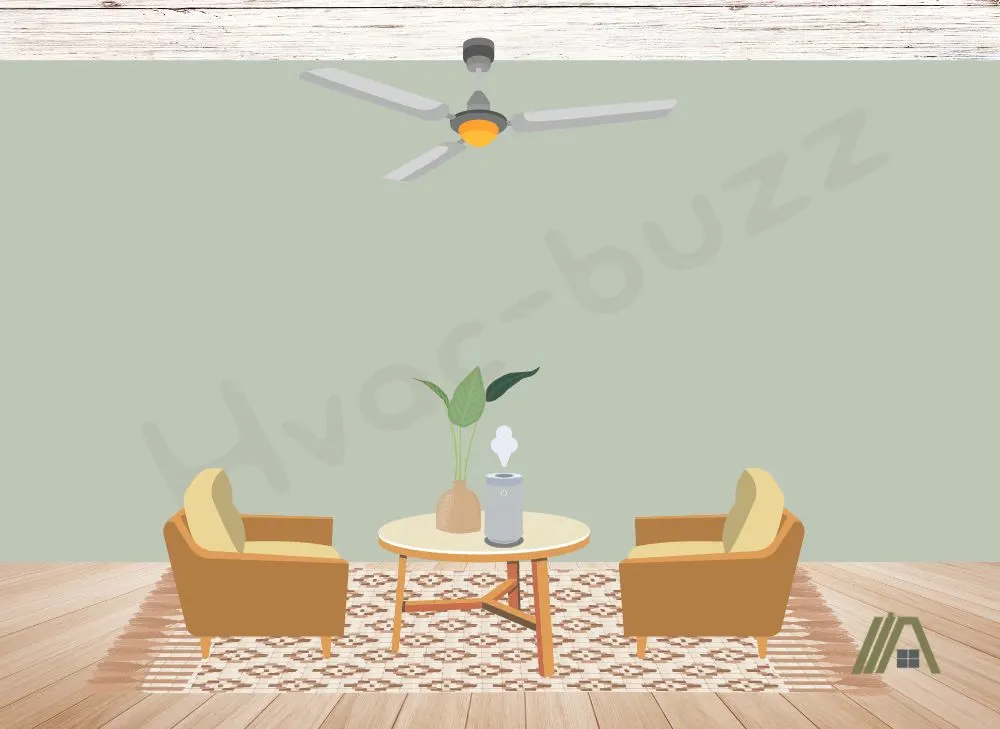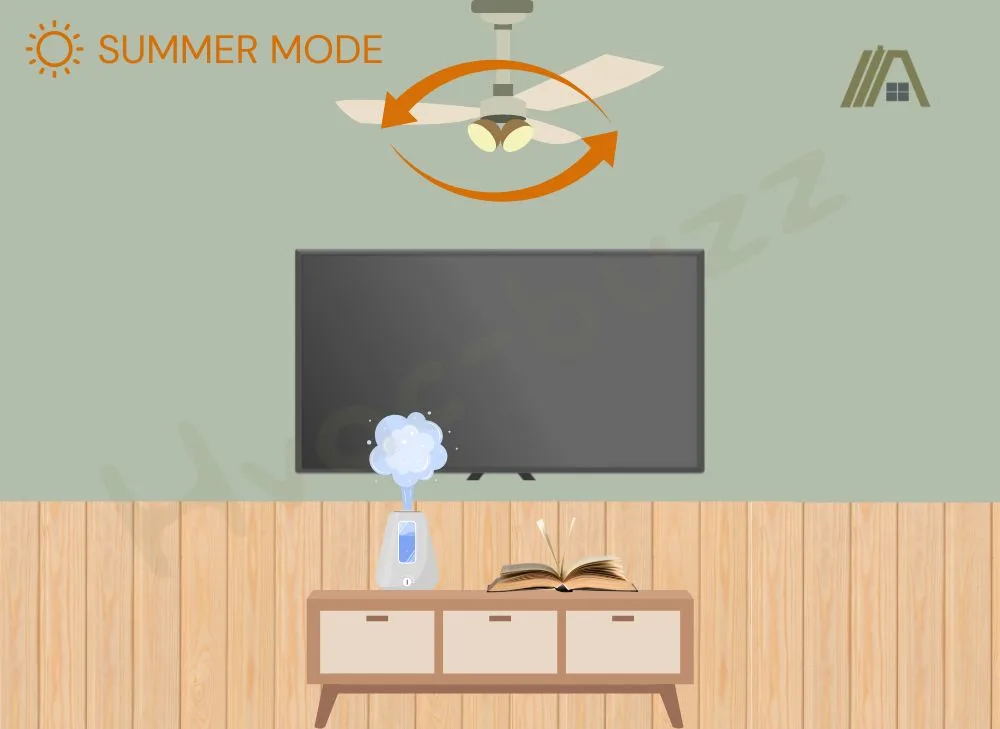The ceiling fan can sometimes be very misunderstood in the ventilation world. We often assume that it will cancel out the effect of another device, but in most cases, the ceiling fan can enhance the effects of other devices that control and manage indoor air temperature.
Far from canceling out the effects of a humidifier, a ceiling fan (spinning in the right direction) can help to make it more effective or to counteract some negative consequences of running the humidifier.

Clockwise and counterclockwise rotation of ceiling fans increases air movement in a room, which helps to better distribute humidified air. The heat added to the room by the humidifier can enhance the effectiveness of winter mode (clockwise spin) or be counteracted by summer mode (counterclockwise spin).
Should You Use a Ceiling Fan With a Humidifier?
As I have said, using a ceiling fan and humidifier in conjunction can increase the effectiveness of the humidifier. This is because the ceiling fan increases the air circulation in the room.

Some humidifiers may have small built-in fans to assist in circulating the humidified air. However, these will not be effective in larger rooms, creating the possibility of one area in a room being over-humidified and leaving other areas untouched.
By using a ceiling fan and a humidifier together, it allows for even dispersal of humidity and a greater range of movement of air.
Potential Issue
The purpose of using a humidifier is to increase the moisture in the air, particularly to benefit the occupants in the room. It is, therefore, important to use the two in combination only in an enclosed space where there is little chance for the humidified air to escape.
If the room is not enclosed (there are air leaks, open windows, or open internal/external doors), there is greater potential for the humidified air to escape. Add to this the improved air circulation, and the rate of air loss from the room increases.
For the most part, this can easily be prevented by closing the windows and doors to ensure that the moisture is kept and distributed within a specific space. In other cases, you may have to seal up gaps and cracks, such as the air gaps in baseboards.
Any Direction for Air Circulation
Ceiling fans can rotate counterclockwise (summer mode) or clockwise (winter mode). Technically, because both directions create air movement, both are suitable for enhancing the distribution of humidified air.
In general, summer mode (air blows downward) will be more effective because it can generate greater airflow rates, but it does also mean that you have air blowing over you at these greater rates.
This is not always comfortable, particularly in winter or if you are trying to sleep. You can use a slower speed setting to try to counter this, however.
Clockwise to Take Advantage of Humidifier Heat
Humidifiers work by heating up the water and vaporizing it to be released as steam. They are, therefore, heat-generating appliances.
In addition to using the ceiling fan to make humidified air distribution better, you can also exploit the heat-generating aspect of humidifiers to make your fan more effective in winter.
Clockwise rotation is typically winter mode on a ceiling fan. In winter mode, cold air is pulled up away from people, and any warm air sitting against the ceiling (where it naturally wants to go) is displaced down into the occupied area of the room.
While this is not really effective when all you are working with is whatever warmth already exists in the room, adding a heat source makes it much more effective.
Humidifiers release warmed air because warm air carries moisture much better than cold air does. So, you can put the fan in winter mode, disperse the humidified air properly, and benefit from the heat of this air as well.
Counterclockwise to Off-Set the Added Heat
Running your humidifier in summer can be tricky because, as we have established, humidifiers add some heat into the room (they cannot make your fan blow cold air as some people claim). They also make a room feel much warmer because they impede evaporative cooling
If you want the benefits of the humidifier but you are starting to get too hot because of the addition of heat into the room, then you can counter this with a ceiling fan in summer mode.

Ceiling fans cool you with wind chill; they do not cool the air in the room. This is good because, if they cooled the air, it would cause the newly humidified air to lose its moisture again as condensation. So, you benefit from the even distribution of humidified air as well as the cooling effects of the ceiling fan.
Distance Between Humidifier and Ceiling Fan
The distance between the two devices can also come into consideration. In a small room, they will readily interact. In a large room, you have to make sure that they are positioned close enough to interact.
If you can’t have your ceiling fan and humidifier relatively close together, then you should probably set the fan to spin counterclockwise because this creates more airflow.
Sources
https://manufacturedhomepartsandaccessories.com/ceiling-fan-and-humidifier/
https://home.howstuffworks.com/humidifier.htm
https://sleepcavern.com/everything-about-using-a-humidifier-and-a-fan-in-your-bedroom/

